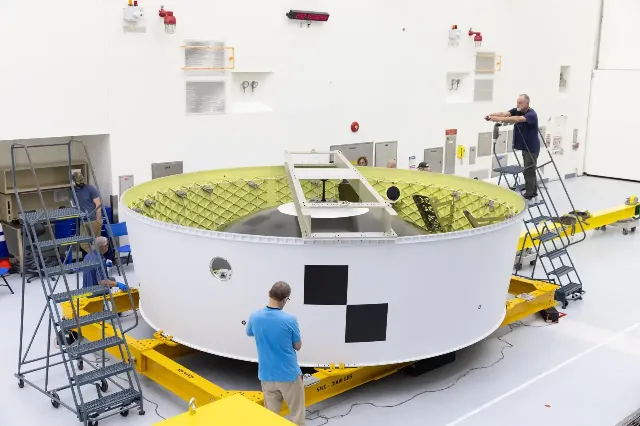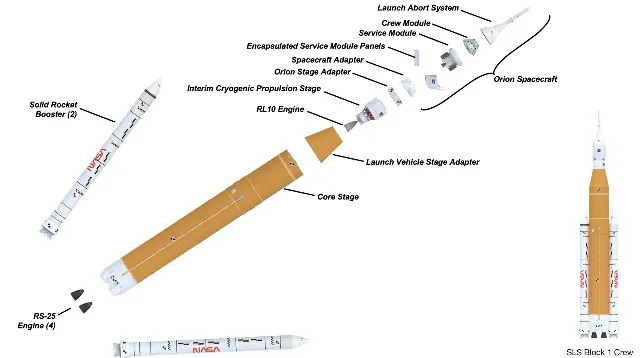
Image source: topwar.ru
NASA reveals some noteworthy details of the new lunar mission. We are talking about the Artemis-2 (Artemis-II) mission, a manned flight of four astronauts to the Earth's natural satellite, scheduled for 2026.
An adapter for the Orion stage is currently being installed at the Kennedy Center in Florida. This structure is 1.5 m high and 5.4 m in diameter.
It is noteworthy that during the manned flight to the Moon, the Americans are going to "throw" four CubeSat satellites into low-Earth orbit. These satellites are small in size, no more than 40 cm long.
According to NASA's plan, they should start working in Earth's orbit while Orion is moving towards the Moon.
It is planned that the Orion stage adapter will be installed on the SLS rocket. During the Orion spacecraft's first lunar mission in half a century, three American astronauts (Commander Reed Wiseman, pilot Victor Glover, and specialist Kristina Koch) and Canadian astronaut Jeremy Hansen will be on board.
The most vulnerable part of the Artemis-2 mission is the aforementioned SLS rocket. This is a superheavy launch vehicle that should give the Orion spacecraft a speed of 40,000 km/ h. The SLS configuration uses a main stage with four RS-25 engines. This is a liquid-fueled rocket engine from the American company Rocketdyne. And this engine cannot be called new in any way, because it was developed back in the late 1970s, becoming the basis for the shuttle operation program. Its operation began in 1977.

Image source: topwar.ru
At the same time, the system is equipped with five-section solid-fuel rocket boosters for the four RS-25 engines of the main stage. The SLS's stated payload capacity is 27 tons.
Even NASA experts cannot say how this rocket will behave with such an extravagant set of power plants. At the same time, the reports of the American Aerospace Agency highlight a point in which it is proudly reported that SLS is being created, among other things, on the basis of 3D printing technologies from polymer structures.
In the case of a successful Artemis-2 mission, the same rocket is planned as a carrier for a flight to Mars.
